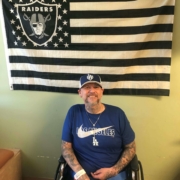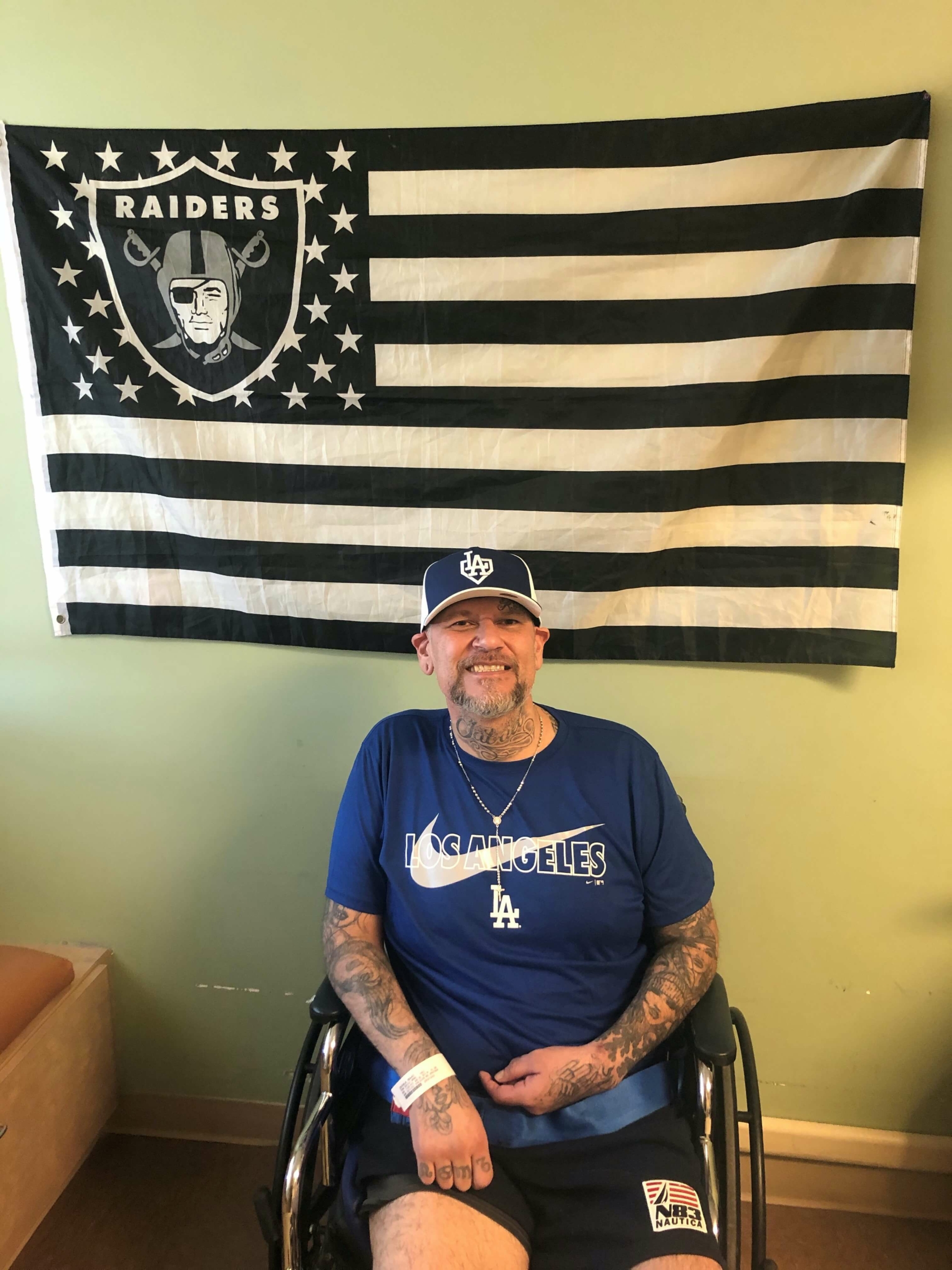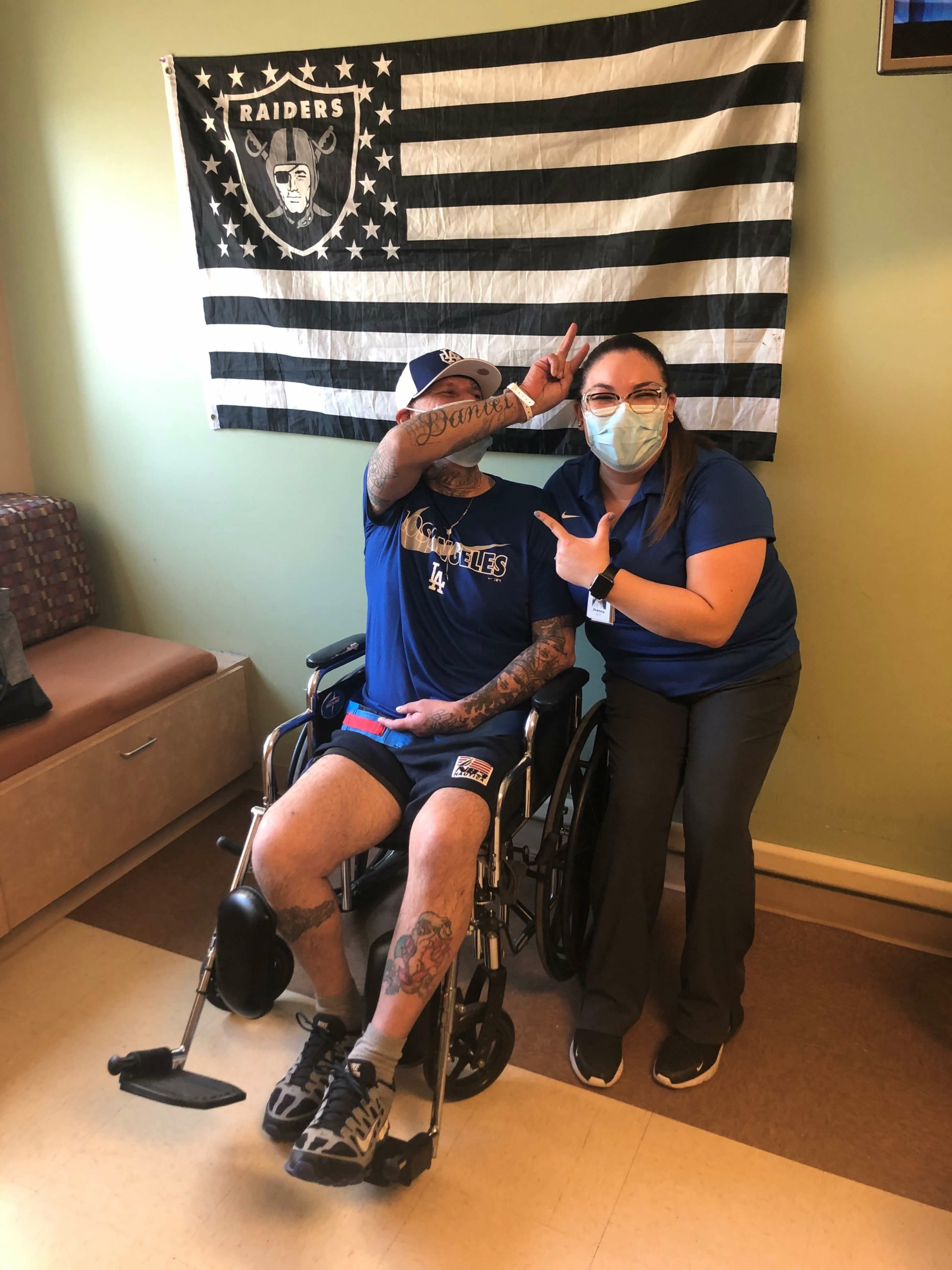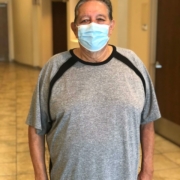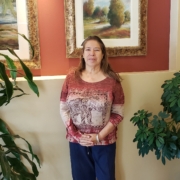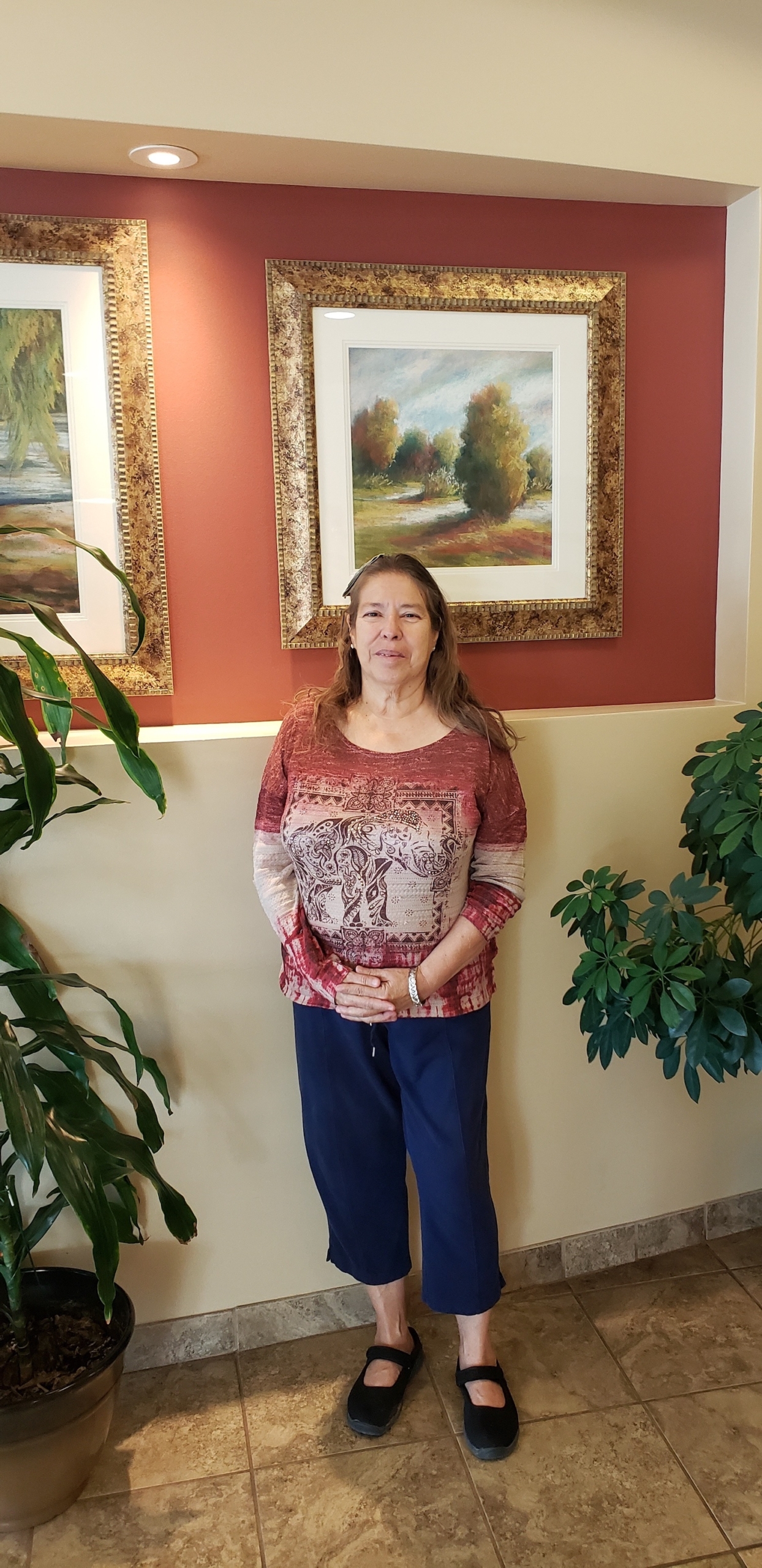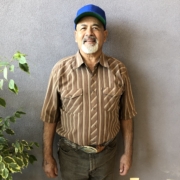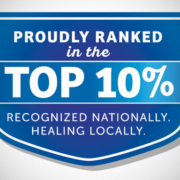Before his brain injury, Isaac Zavala, a father of two, was an active guy. He worked at a chili plant as a machine operator and spent his free time with friends playing darts and shooting pool.
One morning, Isaac woke up with a massive headache and felt dizzy. When he tried to stand up, he fell and hit his head. Isaac had suffered a stroke and a serious brain injury. After an initial hospitalization, he was admitted to the Rehabilitation Hospital of Southern New Mexico to begin his recovery.
As with any recovery from a serious injury, there were tough days. But Isaac was inspired to push through the tough days by staff members like Joanna, his speech therapist. “She was always on me and motivated me. She would tell me to focus, scan to the left, and take my time.” He has worked hard to achieve his rehabilitation goals and wants to prove to everyone that he will walk again.
With a desire to pay it forward, Isaac has advice to share with others who have suffered a brain injury. “You gotta keep fighting your fight. Go to therapy and do your best every day. As hard as it is, think positive. Keep fighting because there is light at the end of the tunnel. At times it seems like you can’t accomplish your goals, but you can.”
Isaac’s stay at RHSNM involved not just therapy, but education, as well. He now knows the signs and symptoms of a stroke and will incorporate preventative measures into his routine. He continues to work on getting his old life back. For him, that starts with not taking the little things for granted like walking, going to the bathroom, and taking showers by himself.
“When you least expect it, you will look back and see how much progress you’ve made, and it’s shocking.” He views success as walking on his own again so he can take his kids to do their favorite activities like going to the beach.
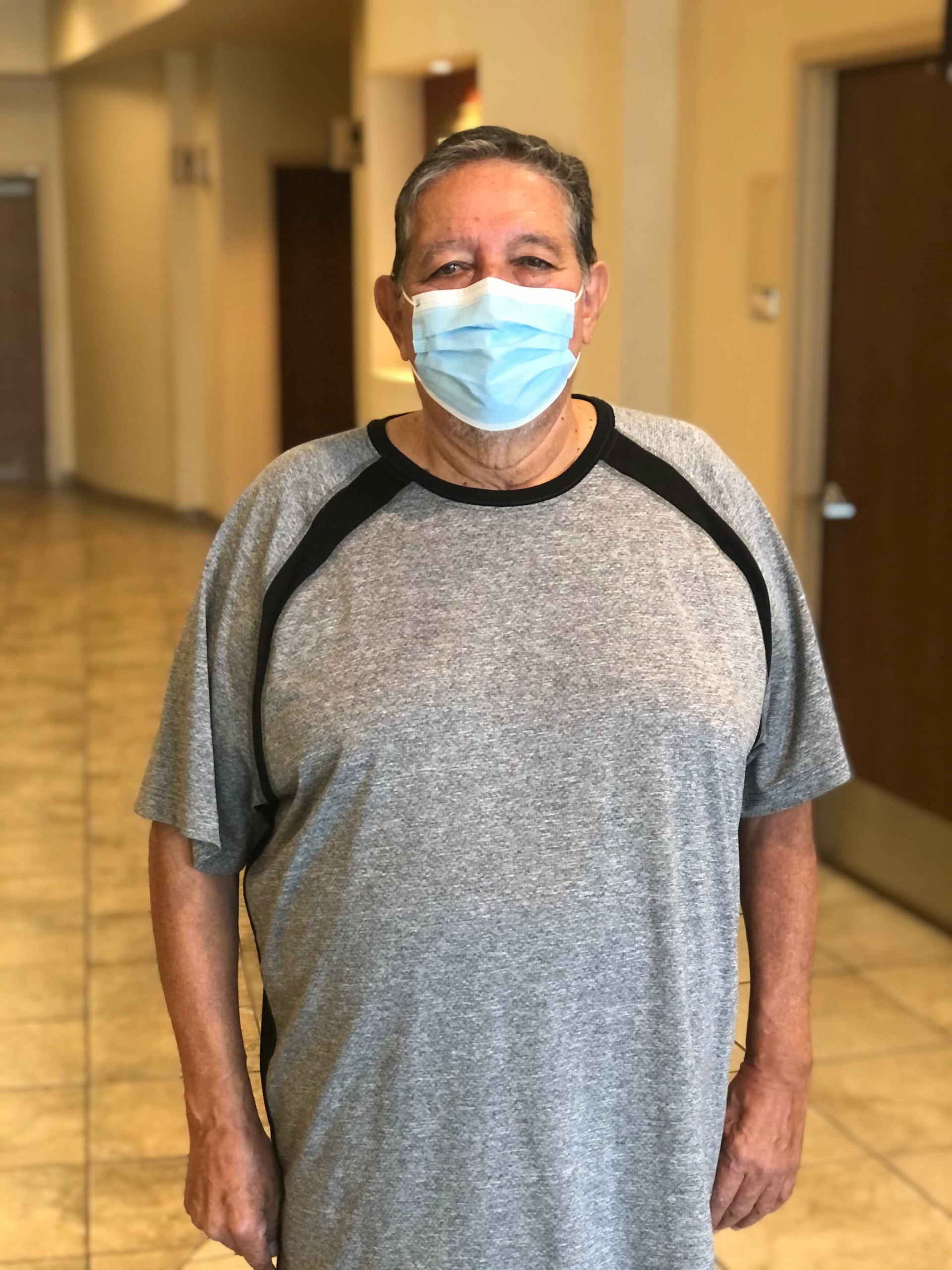
Ramon Segobia is a 68-year-old gentleman from Las Cruces, NM. He has lived an active and independent lifestyle with Irma, his wife of 50 years. Ramon loves to garden and spend time outdoors, hiking and fishing with his grandchildren. He also enjoys officiating high school sports such as football, basketball, and baseball.
Believing he was having a severe allergy attack one October day, Ramon went to the hospital. Tests revealed that the symptoms he experienced weren’t due to allergies, but COVID-19. Irma also tested positive for COVID-19. They were sent home with medications to rest and recover. Ramon’s symptoms worsened and he had to return to the hospital where he was placed on a ventilator. After almost a month in the hospital, Ramon received a tracheostomy and PEG tube for nutrition, remaining on the ventilator. Irma, meanwhile, was able to remain home and recovered well there.
In mid-November, Ramon was admitted to Advanced Care Hospital of Southern New Mexico (ACHSNM) to wean off of the ventilator and recover from the effects of COVID. When he arrived at ACHSNM, Ramon was completely dependent and had only awakened for the first time in almost a month. Ramon recalls being unable to move his left arm and leg when he first woke. He thought to himself that he had to do something to get better, so his family wouldn’t have to bear the burden of taking care of him forever.
With what he described as some “tough love” and the support of the ACHSNM staff, Ramon successfully weaned off the ventilator in just two weeks. He was decannulated two weeks after that. Soon after he passed his swallow study and gradually increased his ability to participate in therapy. He expressed his thankfulness for his occupational therapist, Nate, his nurses, Angelica, Alex, and Margarita, and his respiratory therapist, Rachel, who all pushed him to participate in his care and get stronger. After 37 days at ACHSNM, Ramon had progressed enough that he was ready to move to the next level of care where he could get even healthier, gain endurance, and prepare to go home.
Ramon was then admitted to the Rehabilitation Hospital of Southern New Mexico (RHSNM) in late December. At RHSNM, he quickly progressed with therapy and was able to tolerate a regular diet again. He says that his physical therapist, Brian, and his occupational therapist, Art, supported and pushed him to get moving quickly and motivated him to get better and get home. Ramon was successfully discharged home after only 15 days at RHSNM. He returned home to his wife, who thankfully had fully recovered herself, and began outpatient therapy at RHSNM in late January.
To this day, Ramon continues to improve with his mobility and endurance and says that he looks forward to getting healthier, losing more weight, and getting back to fishing with his grandchildren again very soon!
At the age of 62, Marina Atma suffered a stroke. Today she is a stroke survivor living an active and good quality of life. Two years ago, in August, Marina suffered from a stroke while at work. She worked at a local community college and taught Professional Development courses.
Marina said, “While I was at work one afternoon, I was walking from my office to the front desk and the secretary told me I needed to go to the hospital. When I ask her why, she told me the left side of my face was droopy & drooling and my speech was slurred. I went to the emergency room, where I was diagnosed with Bell’s palsy, discharged and asked to follow up with my primary doctor. When I went to my doctor, I had a magnetic resonance imaging (MRI) of the brain, which showed that I had had 2 strokes. My doctor sent me straight to the emergency room where the staff was waiting for me and I was admitted for treatment of my strokes.”
Marina went on to say, “Six weeks earlier, I was diagnosed with type 2 diabetes mellitus and hypertension. These new diagnoses put me at a much higher risk for stroke along with high levels of stress.” She had no idea she was at such high risk for stroke.
She was referred to Rehabilitation Hospital of Southern New Mexico, which at the time “didn’t mean a lot to me,” said Marina. “Sam (the driver) was the first person I met when he came to pick me up,” she recalled. “I will never forget him, he is so nice!”
“I was scared and thought if they are all like this (Sam), it will be okay.”
When she arrived at Rehabilitation Hospital of Southern New Mexico (RHSNM), all the staff came in to meet her and told her what to expect. They put her anxiety and fears at ease. Marina said, “Dr. Kim (Encapera) was my doctor there at the rehab. She was so kind and caring and really helped me understand everything that was going on with me and my strokes. She answered my questions.”
The second day she was at Rehabilitation Hospital of Southern New Mexico her therapist, Linda, asked her what one of her goals were. Marina replied, “to dance with my husband when I get out.” That day, Linda (the therapist) put on some music and worked on dancing with her so she could achieve her goal.
During the course of her stay, Marina and her husband received a lot of education on how to better care for her and manage her diet, diabetes, hypertension, and exercises from all the staff. “They gave me a stroke book when I was there to take with me and use as a reference. I still have it and use it”, said Marina. “One of the most important things I learned was what F.A.S.T. stands for,” she said. F.A.S.T. is an acronym used to help people recognize the signs of a stroke.
The difference in Marina from arrival to discharge was more than just physical. It was emotional, as well. When she transferred and admitted to Rehabilitation Hospital of Southern New Mexico she was weak and scared from recent strokes.
“The day I left was awesome. I walked out using a walker and all the staff were lined up, clapping and cheering for me!”
Marina discharged home with her husband and went through outpatient therapy services at Rehabilitation Hospital of Southern New Mexico for about six weeks. She now uses a cane for steadying her walk and is living a full, active life with her husband and family. She made a lot of friends during her stay at Rehabilitation Hospital of Southern New Mexico and keeps in contact with them. Marina is active in community stroke support groups and is appreciative for the opportunity to recover from her stroke here.
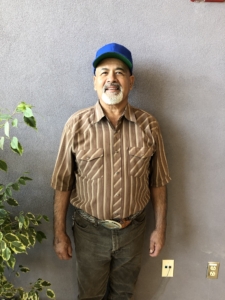
Mr. Luna suffered a traumatic brain injury when he was involved in a roll-over motor vehicle accident.
One late afternoon, Florencio Luna was traveling with his wife and uncle on their way home from Durango, Mexico. They were involved in a roll-over motor vehicle accident, which totaled the truck they were driving. The accident left Mr. Luna unconscious, and his wife could not wake him.
Rehabilitation Hospital of Southern New Mexico has been named in the Top 10 percent of inpatient rehabilitation facilities in the United States for the 12th year in a row. The hospital’s care was cited as being as being patient-centered, effective, efficient and timely.
“We strive to deliver this higher level of care as our standard,” says Sabrina Martin, CEO of Rehabilitation Hospital of Southern New Mexico. “We have graciously been recognized as a top performing facility for many years now, but we never take it for granted. Our staff is exceptionally passionate about helping patients reach their full potential through the care we provide. We work daily to ensure patients are reaching their highest levels of ability and independence.”
Rehabilitation Hospital of Southern New Mexico was ranked in the Top 10 percent from among 870 inpatient rehabilitation facilities nationwide by the Uniform Data System for Medical Rehabilitation (UDSMR), a non-profit corporation that was developed with support from the U.S. Department of Education, National Institute on Disability and Rehabilitation Research. The UDSMR maintains the world’s largest database of rehabilitation outcomes.
“If you take into account that a national study has previously shown that inpatient rehabilitation facilities provide better long-term results for patients, being ranked at the top of that group validates the quality of care we provide,” says Dr. Kimberly Encapera, Medical Director of Rehabilitation Hospital of Southern New Mexico, referencing a study commissioned by the ARA Research Institute that showed patients treated in inpatient facilities experienced improved quality of life as compared to skilled nursing facilities.
“To provide the highest level of rehabilitative care available in the United States to our own community is truly rewarding,” Martin says. “This means our family, friends, and colleagues don’t need to leave the area to receive the best care available.”
Through the UDSMR, Rehabilitation Hospital of Southern New Mexico also will collaborate with peers throughout the nation to share information and establish best practices for patients. “This helps elevate rehabilitative care for everyone across the United States,” Martin says.
Rehabilitation Hospital of Southern New Mexico provides specialized rehabilitative services to patients who are recovering from or living with disabilities caused by injuries, illnesses, or chronic medical conditions. This includes, but is not limited to, strokes, brain injuries, spinal cord injuries, orthopedic injuries, ALS (Lou Gehrig’s Disease), multiple sclerosis, and Parkinson’s disease.
Lorem ipsum dolor sit amet, consectetuer adipiscing elit. Aenean commodo ligula eget dolor. Aenean massa. Cum sociis natoque penatibus et magnis dis parturient montes, nascetur ridiculus mus. Donec quam felis, ultricies nec, pellentesque eu, pretium quis, sem. Nulla consequat massa quis enim.
Lorem ipsum dolor sit amet, consectetuer adipiscing elit. Aenean commodo ligula eget dolor. Aenean massa. Cum sociis natoque penatibus.
